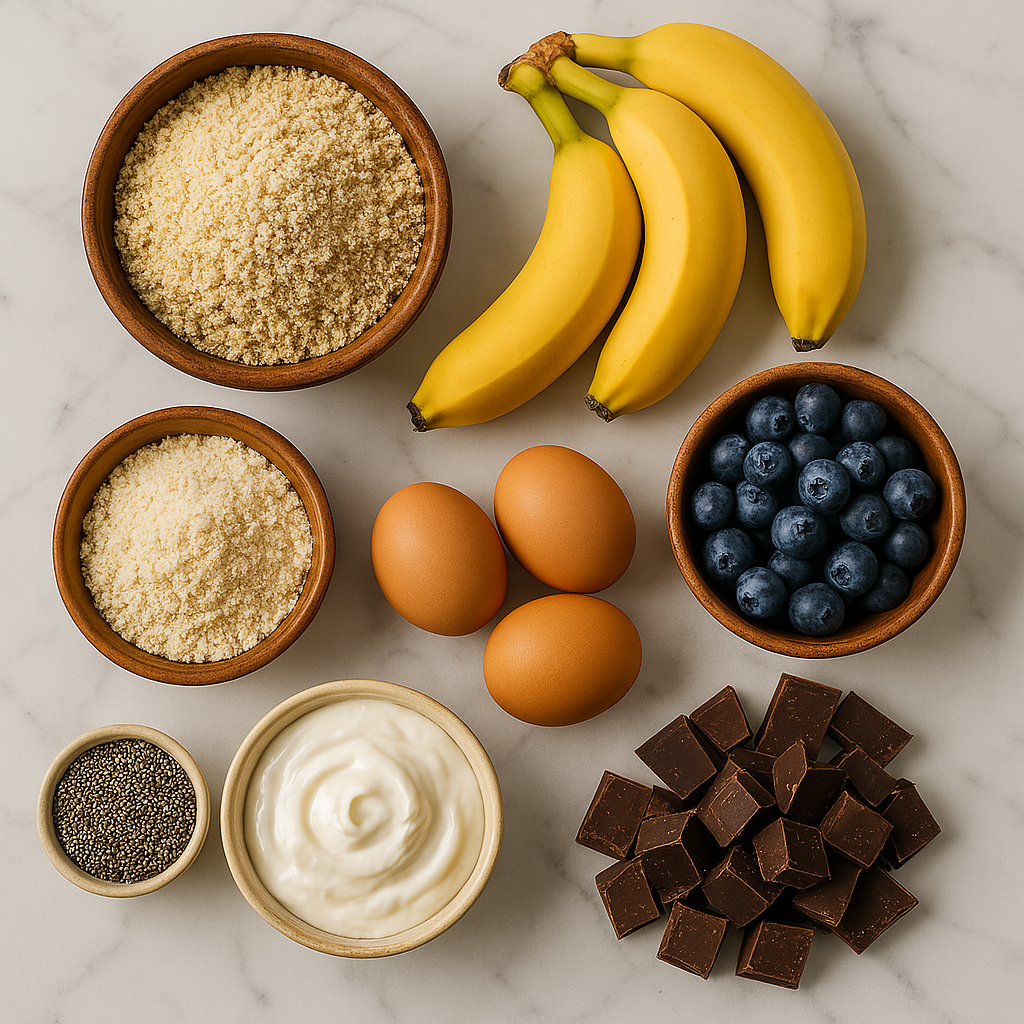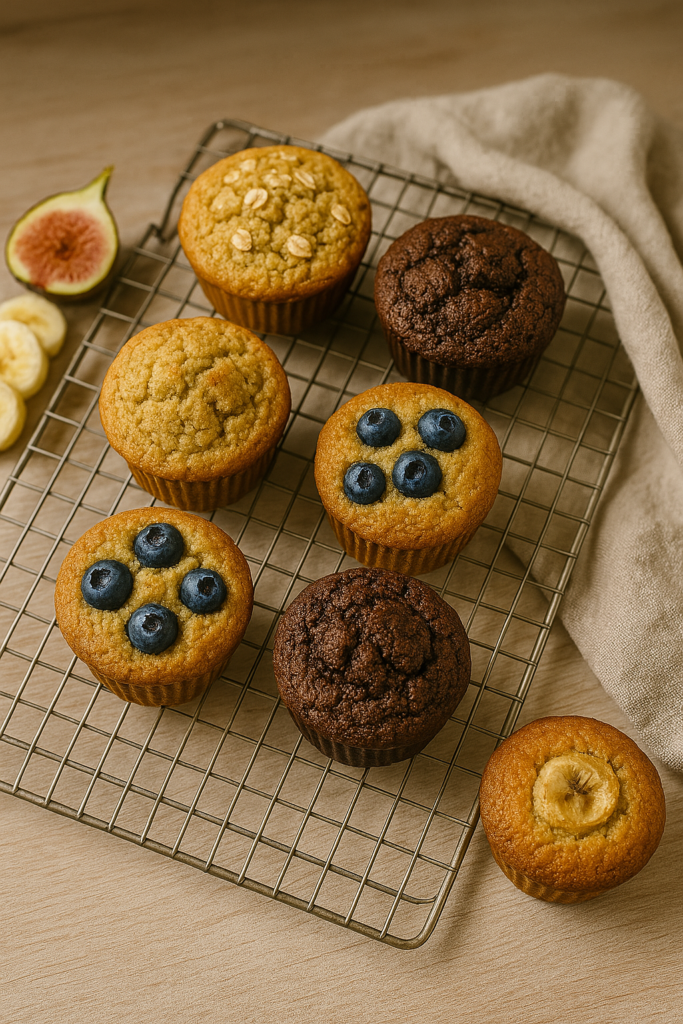Why Gluten Free Muffins Deserve a Spot in Your Routine
Gluten-free muffins have evolved from dry, crumbly substitutes to nutrient-dense snacks and meals tailored to a variety of dietary lifestyles. Whether you’re navigating celiac disease, training for your next competition, or embracing a paleo or keto lifestyle, the right gluten free muffin recipe can meet your nutritional goals without sacrificing taste.
And here’s the kicker—most blogs only focus on flavor or a standard banana muffin. This article goes deeper, breaking down what most gluten free muffin articles don’t: nutrient ratios, fiber content, blood sugar stability, and how these muffins can help optimize performance, digestion, and daily energy.
The Nutritional Case for Gluten Free Muffins
Why Athletes Should Take Note
Athletes and fitness enthusiasts require snacks that deliver sustained energy and recovery support. Muffins made with almond flour, coconut flour, or oat flour offer:
- High protein content (8–12g per muffin when made with Greek yogurt, eggs, or protein powder)
- Complex carbs for sustained energy
- Healthy fats that support brain and hormonal function
According to a study published in the Journal of the International Society of Sports Nutrition (2023), snacks with balanced macros improve post-workout recovery and endurance.
What People With Celiac Disease Should Know
Not all gluten-free muffins are safe. Many commercial options are processed in facilities that also handle wheat. Cross-contamination remains a major issue.
According to the Celiac Disease Foundation, consumers should look for muffins certified gluten free and avoid those using barley malt, modified starches, or natural flavors unless specified.
Best Ingredients to Look for in Gluten-Free Muffins

1. Almond Flour – High in protein and vitamin E
2. Coconut Flour – High fiber, low glycemic index
3. Tigernut Flour – A prebiotic fiber powerhouse
4. Chia Seeds & Flaxseeds – Omega-3s and fiber
5. Greek Yogurt or Dairy-Free Yogurt – Adds protein and moisture
These ingredients not only support celiac-safe baking but also align with low-sugar snacks and sugar free snacks trends that help reduce inflammation and blood sugar crashes.
9 Gluten Free Muffin Recipes That Check All the Boxes
1. Blueberry Almond Protein Muffins
Packed with protein powder, almond flour, and blueberries—perfect for muscle repair and antioxidants.
2. Banana Oat Muffins
Naturally sweetened with banana, these muffins are rich in fiber and ideal for kids and adults alike.
3. Pumpkin Chia Muffins
Great for digestion and immunity support, thanks to vitamin A and soluble fiber.
4. Double Chocolate Avocado Muffins
Keto-friendly, low in carbs, and loaded with healthy fats.
5. Apple Cinnamon Greek Yogurt Muffins
High-protein and naturally sweet. Excellent post-workout snack.
6. Zucchini Carrot Muffins
Great for sneaking veggies into gluten free kids snacks.
7. Coconut Flour Lemon Muffins
Light, zesty, and perfect for spring. Paleo-friendly and low sugar.
8. Cranberry Orange Muffins
A vitamin C boost and tart flavor—great for on-the-go energy.
9. Keto Cinnamon Roll Muffins
Low-carb, sugar free, and bursting with cinnamon flavor.
Sugar Free Muffins vs. Low Sugar Muffins

There’s a big difference. Sugar free muffins typically use stevia, monk fruit, or erythritol. Snacks low in sugar may still contain fruit or honey but keep sugar grams below 5g per serving.
Why this matters: According to Harvard Health (2023), reducing added sugars improves blood sugar control, gut health, and mood regulation.
Gluten Free Muffins for Kids: What to Consider
When it comes to gluten free kids snacks, it’s all about balance. Kids need snacks that are:
- Low in sugar (to avoid crashes)
- High in fiber (for digestive health)
- Appealing in taste and texture
Top picks:
- Banana Oat Muffins
- Carrot Zucchini Muffins
- Blueberry Almond Muffins (mini size)
Meal Prepping Muffins for the Week
Baking a batch of gluten free muffins on Sunday can make your week smoother. Store them in airtight containers for up to 5 days or freeze individually.
Use silicone muffin cups for easy cleanup and portion control.
Common Mistakes When Making Gluten Free Muffins
- Overmixing – Leads to dense, rubbery texture.
- Skipping Binders – Xanthan gum or eggs are essential for structure.
- Using too much coconut flour – It’s super absorbent and can dry out your muffins.
- Not checking cross-contamination – Always double-check your flour source.
The Future of Gluten Free Muffins
With new flours and binders emerging (like banana flour, psyllium husk, and aquafaba), gluten free baking continues to evolve. Expect future muffin recipes to be even more inclusive of allergies and dietary needs.
Conclusion: Smart Snacking with Gluten Free Muffins
Whether you’re training, managing a chronic condition, or just want to snack smarter, gluten free muffins offer a versatile, nutritious, and delicious option.
By choosing the right ingredients and avoiding hidden sugars or gluten traces, you’re setting yourself up for better energy, improved digestion, and a healthier lifestyle overall.
Explore More:
- ✅ Internal Link: More Gluten Free Recipes on WhatForDinner.com
- 🔗 External Links:

pls may i have the recipes tks
all yours
I don’t think the title of your article matches the content lol. Just kidding, mainly because I had some doubts after reading the article.
Where are the recipes????
Thanks for sharing. I read many of your blog posts, cool, your blog is very good.